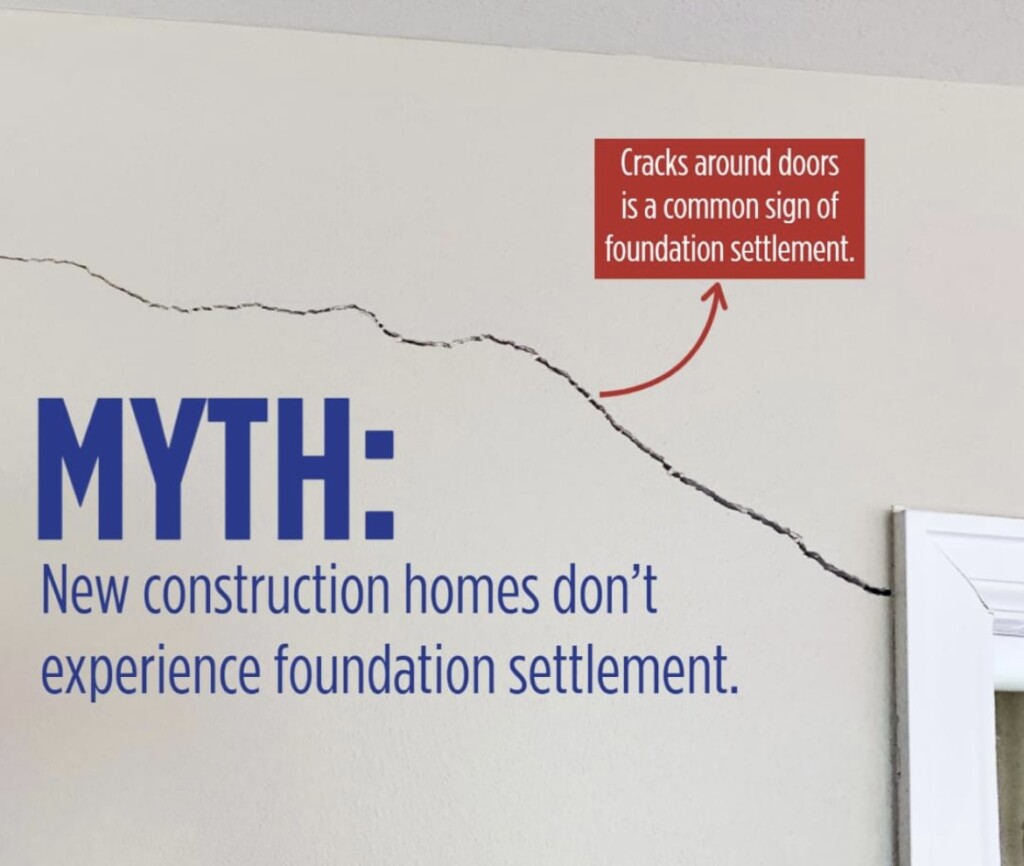When investing in a new construction home, many homeowners hold the belief that their brand-new abode will be free from the imperfections older homes often present. One of the most common myths is that new homes don’t experience settlement cracks. However, the reality is a bit more nuanced.

Understanding Settlement Cracks: Settlement cracks are the small cracks that appear in buildings due to the natural process of the building “settling” into its foundation. This is a normal occurrence and can be influenced by various factors including soil conditions, moisture levels, and the weight of the building itself.
Why New Construction Homes Aren’t Immune:
- Nature of Materials: Building materials, especially concrete and wood, naturally expand and contract with changes in temperature and humidity. As they adjust to the environment of their new location, they might exhibit minor cracking.
- Soil Movement: The ground beneath a home, whether it’s old or new, is constantly shifting, albeit minutely. This can be due to factors like changes in moisture or the freezing and thawing of the ground in colder climates.
- Initial Settling: New homes, just like older ones, need time to settle into their foundations. This initial settling period can lead to minor cracks, often within the first year.
Addressing the Myth: The myth likely stems from the belief that modern construction techniques and materials have evolved to a point where buildings no longer experience these natural shifts. While it’s true that advances in construction have made buildings more resilient, no home is entirely immune to the forces of nature.
What Homeowners Can Do:
- Regular Inspections: Regularly inspect your home, especially in the first year, to identify any potential settlement cracks.
- Seek Expertise: If you notice large or rapidly expanding cracks, it’s a good idea to consult with a structural engineer or home inspector to ensure there’s no underlying issue.
- Maintain Your Home: Simple steps like ensuring proper drainage around your home can help minimize the risk of excessive settlement.
While new construction homes offer a plethora of benefits, including modern designs and updated amenities, it’s essential to approach homeownership with realistic expectations. Settlement cracks, minor as they might be, are a natural part of a home’s life, whether it’s freshly built or has stood for decades. Being informed and proactive can ensure that these cracks remain a minor cosmetic issue and don’t evolve into more significant concerns.
As an Amazon Associate we earn from qualifying purchases through some links in our articles.




